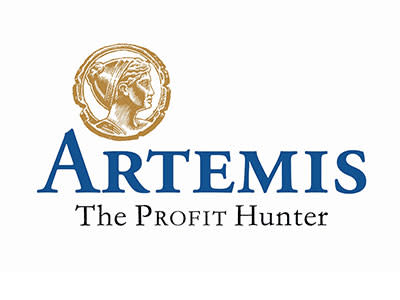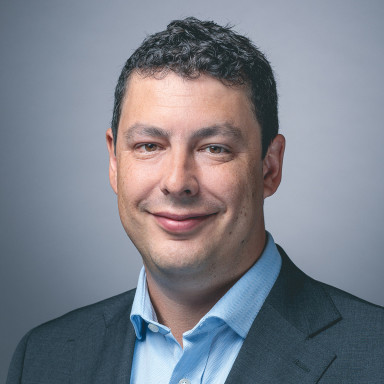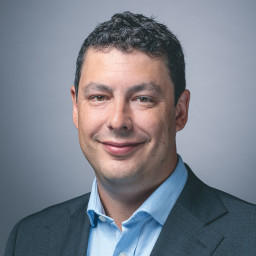We think David Ennett and Jack Holmes are talented high yield bond fund managers with plenty of relevant experience
Ennett and Holmes benefit from the support and challenge provided by a strong fixed income team at Artemis, led by Stephen Snowden
The fund could be a good choice for a bond portfolio willing to accept more volatility in search of a higher income
This fund features on our Wealth Shortlist of funds chosen by our analysts for their long-term performance potential
How it fits in a portfolio
The Artemis High Income fund focuses on paying a high income to investors, mainly by investing in bonds, but it can also invest up to 20% of its assets in UK and European shares.
A focus on high-yield bonds and shares that pay a dividend makes it a little different from most bond funds, though it also makes it a higher-risk option. The fund could be a good way to diversify a conservative bond portfolio, or a more adventurous shares portfolio seeking exposure to other asset classes. It could also be used as a more adventurous part of a portfolio being invested for income.
Manager
David Ennett and Jack Holmes are co-managers of the fund. Ennett joined Artemis in February 2019 from Kames Capital, where he was Head of High Yield. Prior to this he was Head of European High Yield at Standard Life Investments and a high yield portfolio manager at Old Mutual Asset Managers. We think Ennett is a talented high yield bond fund manager with relevant experience which has resulted in him developing a good track record. He is focused on producing a high income for clients and we think he has the experience, support and resources to do a good job for investors.
Holmes joined Artemis in June 2019 from Kames Capital, where since 2016 he co-managed a range of high-yield bond funds. Ennett and Holmes benefit from the support and challenge provided by a strong fixed income team at Artemis, led by Stephen Snowden.
Ed Legget also contributes to the running of this fund by selecting the shares that feature. He has been with Artemis since December 2015.
Process
The managers look to identify bonds offering attractive yields and trading at attractive valuations from companies they believe will be able to service their debts and pay bondholders. They focus on finding cash generative companies which possess pricing power. This includes spending time analysing the dynamics of both the industry in which the company operates in and the company itself. The managers will typically introduce new investments to the fund at a position size of 0.5%, rising up to around 3.5% for the positions where they have the highest conviction. AAA rated government bonds can exceed this position size though.
Ennett and Holmes are focused on the fund’s objective to provide a high level of income to investors. They think including some company shares in the fund (which are selected by Ed Leggett) can add to the fund’s income and growth potential and complement some of the fund’s bond investments. Derivatives can also be used in the fund, which adds risk.
In recent months the managers have added to their government bond exposure in place of some higher rated corporate bonds. This continues a trend over the last 12 months of increasing exposure to government bonds, with their total investments in government bonds being around 11% in March 2023, increasing to around 18% in March 2024. Over the same period, they have reduced investments in high yield bonds (those that have the worst credit ratings) from around 50% to 46%.
As part of this change, the team have continued to reduce investments in the lowest rated credit, CCC. Their view is that these companies are most at risk of default and following increases to bond yields generally, they are offering much less value compared to other bonds once you allow for the potential risk of defaulting on their payments.
The increasing yield environment generally has made government bonds more appealing, which is why they have increased their investments in this area.
In terms of duration, the team have increased this over the year to 5.1 years. Duration is measured in years and reflects how sensitive the fund is to interest rate changes. The higher the duration value, the more sensitive the fund is to interest rate changes.
Culture
Ennett and Legget are partners at Artemis, and Artemis is a private company. We think this structure is a good thing for investors, as both manager and firm are focused on the long term and can run funds without the distraction of short-term shareholder demands. Fund managers are required to invest their own money into the funds they manage. This means the managers succeed when their investors do. We feel there are strong incentives in place for the managers to continue to strive for good performance.
While the fixed income team at Artemis is smaller in number when compared to many of the larger asset managers in the industry, we have a positive view of the team, particularly Head of Fixed Income Stephen Snowden. We therefore think that Ennett and Holmes are suitably resourced to run their funds.
ESG integration
Investment teams at Artemis are encouraged to think for themselves and invest according to their own style, so the quality of ESG integration across the firm varies. Artemis does have a firm-wide policy to support the aims of international conventions on cluster munitions and anti-personnel mines and therefore the firm will not knowingly invest in companies which produce these weapons.
Artemis votes on all their holdings, unless restricted from doing so, and fund managers engage with firms to develop their understanding, raise issues with management and monitor subsequent developments. Artemis produces a monthly voting summary, and these summaries include rationales for some of the more controversial votes. Engagement case studies can be found in the firm’s annual Stewardship Report.
The managers are gradually taking ESG issues into account more when analysing companies for this fund. Along with the wider team, they engage with companies on sustainability issues and vote on key issues. That said, this is not an ESG labelled fund and the risk-return profile of the bonds they invest in remains the most important thing.
Cost
The fund has an annual ongoing charge of 0.72%, but through Hargreaves Lansdown you can secure an ongoing saving of 0.16%. This means you’ll pay a net ongoing charge of 0.56%. The fund discount is achieved through a loyalty bonus, which could be subject to tax if held outside of an ISA or SIPP. The HL platform fee of up to 0.45% per year also applies, except in the HL Junior ISA, where no platform fee applies.
Please note charges can be taken from capital, which can increase the yield but reduces the potential for capital growth.
Performance
Since Ennett and Holmes took over management of the fund in September 2021, the fund has delivered a return of 3.44%* compared with a return of -3.77% for the IA £ Strategic Bond peer group sector average. We’re pleased that the new managers have made a good start on the fund, but it should be noted that this is a relatively short timeframe to assess performance and that past performance is not a guide to future returns.
Over the 12 months to the end of March, the fund returned 11.43% compared to the IA £ Strategic Bond peer group sector average of 7.44%.
High yield bonds added the most value for the fund. As this is the largest set of investments within the fund, it should be expected that how this section performs will have a meaningful impact on the overall fund return. Bonds from Modulaire, the portacabin business, and Miller Homes were some of the strongest performers.
The shares section also provided strong returns for the fund over the period, with investments in 3i and Vistry Group performing particularly well.
Government bonds provided a positive return over the 12 months, however this was lower than the return achieved from many of the corporate bonds. There were also some corporate bonds that lost value, with investments in bonds issued by Heimstaden and At Home Group both performing negatively for the fund.
To generate a high income for investors, the fund invests in high-yield bonds and also invests in some company shares. Both of these can increase volatility and mean that typically, we don’t expect the fund to hold up quite as well as some other funds in the sector when bond markets go through a tough patch, but expect it to perform better than peers in a rising market. We think the fund has the potential to perform well over the long term though, although there are no guarantees.
At the time of writing, the fund offers a distribution yield of 5.28%, although yields are variable and aren’t a reliable indicator of future income.
Annual percentage growth
31/03/2019 To 31/03/2020 | 31/03/2020 To 31/03/2021 | 31/03/2021 To 31/03/2022 | 31/03/2022 To 31/03/2023 | 31/03/2023 To 31/03/2024 | |
|---|---|---|---|---|---|
Artemis High Income | -10.60% | 23.18% | -0.56% | -3.87% | 11.43% |
IA £ Strategic Bond | -2.17% | 13.10% | -2.33% | -6.25% | 7.44% |


